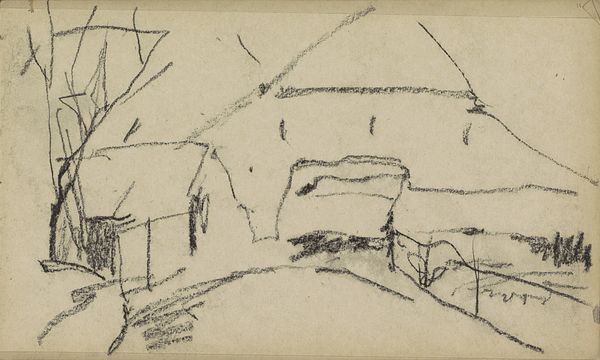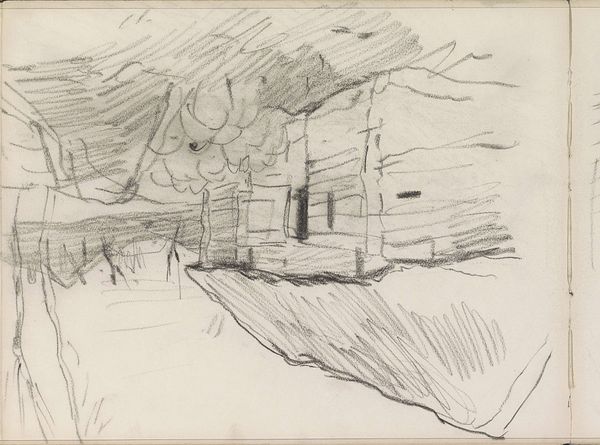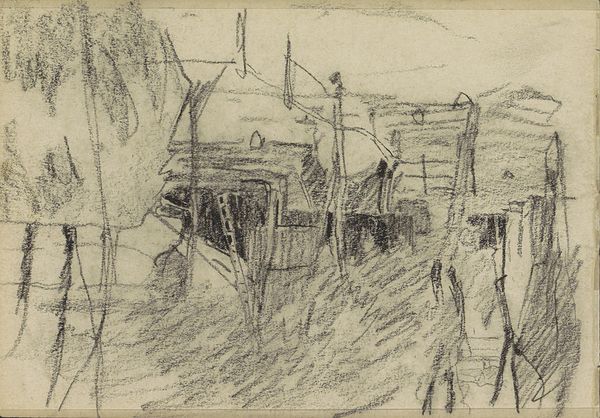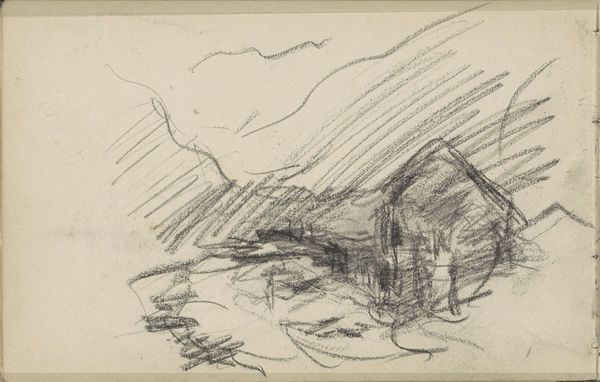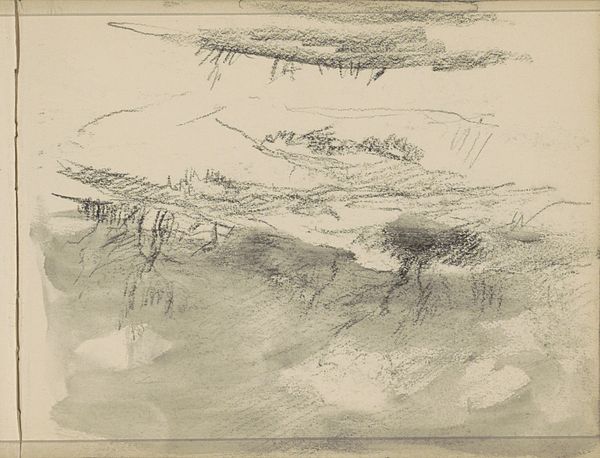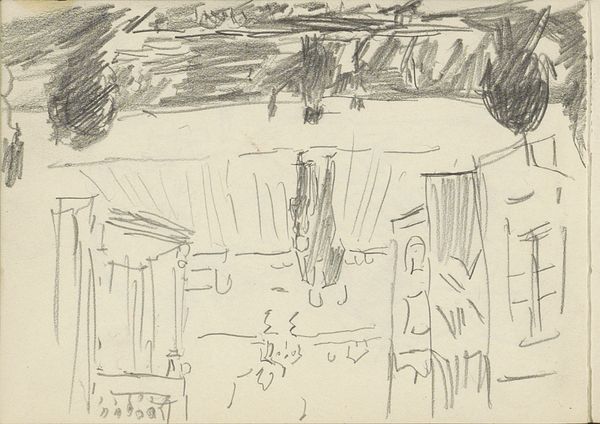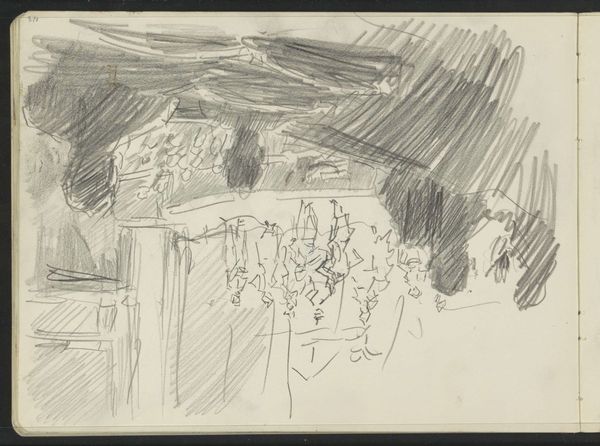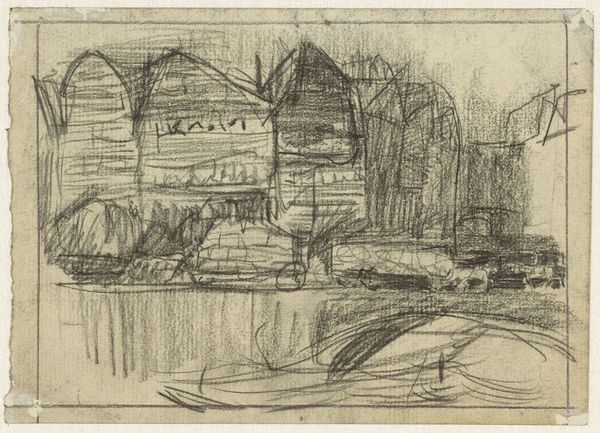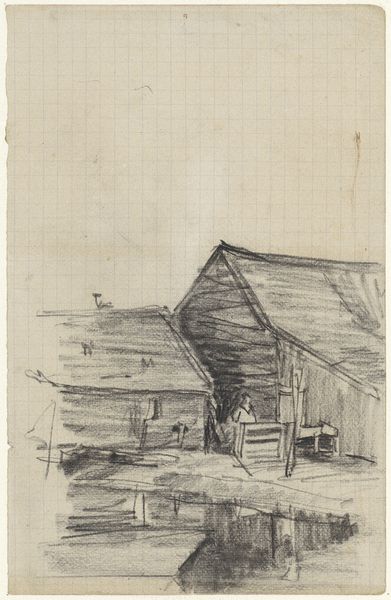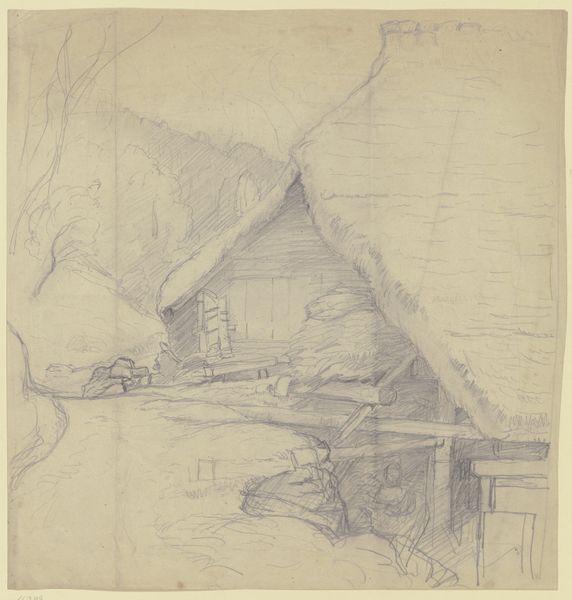
drawing, pencil
#
drawing
#
pencil sketch
#
landscape
#
geometric
#
pencil
Copyright: Rijks Museum: Open Domain
Curator: Right, let’s consider "Weiland," a landscape drawing executed in pencil by Johan Antonie de Jonge sometime between 1901 and 1927. What strikes you immediately? Editor: It feels desolate. Bleak, almost. All these scratched lines of dark graphite conjuring… wind? Weather? Something oppressive. Curator: Indeed. The horizontal orientation accentuates a broad, panoramic view despite the sketched nature. Observe how de Jonge uses dense hatching in the upper register to define the sky. Notice too how geometric forms interrupt this horizon; they appear industrial. Editor: I see what you mean—the distinct shapes break the natural flow. Makes me wonder if he's trying to capture the intrusion of man, machine, or building upon nature. Curator: Possibly. The foreground exhibits looser strokes suggesting natural elements perhaps; a bank of earth, or a reedy waterline. What significance can we derive from this relationship? The piece employs minimalist means—a raw sketch aesthetic—to explore complex relations. Editor: The "raw" part gets to me. It lacks finesse and polish which enhances a primal emotion. Maybe I’m reaching, but it has a haunting appeal to me, something unfinished and deeply personal. Curator: An intriguing consideration. It brings to mind theories around aesthetic experience that deal with the intersection between artist intention, materiality, and subjective engagement. But this intersection has an unsteadiness. It never seems secure in making its point. Editor: Exactly. Maybe it’s not about a concrete statement. Perhaps the power comes from its very impermanence. Its refusal to sit still! Curator: A fitting sentiment for a drawing rendered with such immediacy. Editor: I'm glad we stopped to notice its whispers today.
Comments
No comments
Be the first to comment and join the conversation on the ultimate creative platform.
